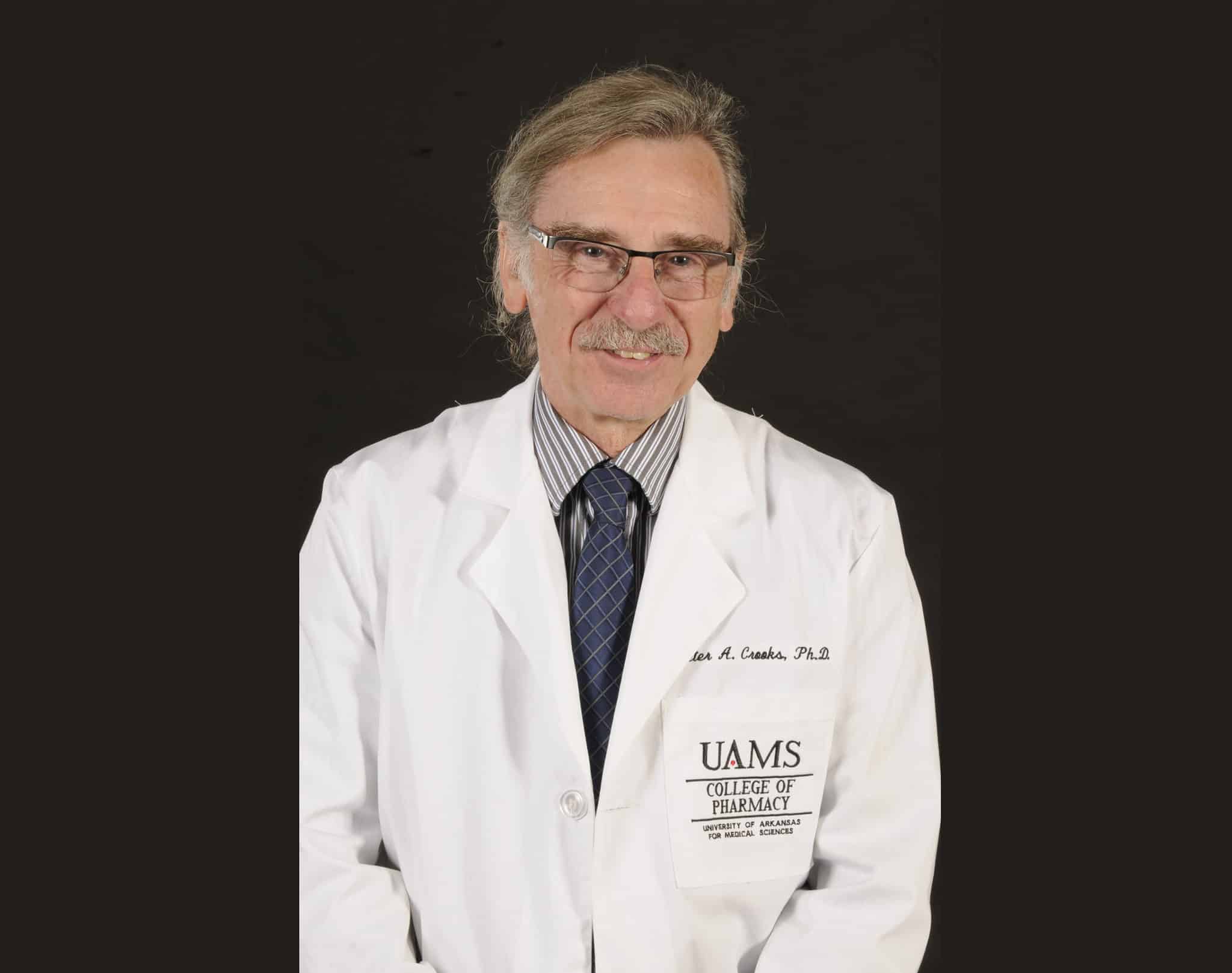UAMS-UA Research Yields Long-lasting Disinfectant Spray for Surfaces
| Researchers at UAMS and University of Arkansas, Fayetteville, are developing a long-lasting spray that coats and disinfects surfaces for extended periods, even in heavy use, and is less likely to transmit infectious diseases.
The project is one of many at both campuses that uses research funding quickly made available during the COVID-19 pandemic for projects that could have a direct impact on treatment, prevention or containment of the virus’ spread. The researchers have a prototype and a company ready and are working to make the product available to the public.
The spray has been shown to be an effective antibacterial agent and is being explored for antiviral properties. The spray also lasts longer than standard cleaning solutions — researchers have demonstrated it can withstand up to 50 touches on a metal surface or 40 days before it needs to be reapplied.
They have experimented with using a green dye in the spray material, so a person approaching a surface that had been sprayed could tell by sight whether it was safe to touch – as long as it still appeared green – or if more disinfectant needed to be applied.
The spray could be used in high traffic areas where many people are touching doorknobs and fixtures, such as hospitals, schools and bathrooms, and it could also be sprayed on packages in distribution centers, without damaging them, to better protect employees and consumers, the researchers said.
The spray was developed by a team that includes Professor Peter Crooks, Ph.D., D.Sc., and postdoctoral fellow Soma Shekar Dachavaram, Ph.D., both from the UAMS College of Pharmacy, and Professor Jamie Hestekin, Ph.D., and doctoral student John Moore, Ph.D., both in chemical engineering at the U of A. The original development of this work came from an NSF Epscor Track 1 project led by Min Zou, Ph.D., professor of mechanical engineering at the U of A, and Steve Stanley, Ph.D., from the Arkansas Economic Development Commission.
When the COVID-19 pandemic intensified and research funds became available, Crooks said he looked at his ongoing research to see if any of his areas of expertise could be reapplied to help fight COVID-19. He and his partners at the U of A had been studying nanocellulose for its potential as a non-toxic way to better deliver prescription drugs inside the body. Although this didn’t immediately suggest a connection to COVID-19, Crooks said he and his colleagues kept brainstorming until they realized cellulose could serve as a safe, natural and effective medium for transmitting something outside of the body as well – in this case, disinfectant.
“I would encourage other researchers to be open-minded and look for opportunities like this, and to think very carefully about re-casting your area of research expertise to help with COVID-19 in any way you can,” Crooks said. “There are all types of problems associated with COVID-19, from pre-infection, to initial health concerns, to post-infection. Your expertise may be able to save lives, however far-fetched it might seem at first glance.”
Crooks and his colleagues had already been working closely with cellulose for five years, so he had already conquered many of the big challenges associated with turning it into a carrier and had a lot of practice at this technique. This allowed him to quickly re-apply this skill to the disinfectant project.
The other factor that makes for quick turnaround is that all of the antiviral substances involved are already FDA-approved and will not be ingested so there will not need to be extensive and time-consuming clinical trials.
Researchers have a preliminary prototype under testing and have started a business called Nanocellutions, where Moore is the CEO. The spray can be produced as a liquid, which can be aerosolized by the client, or it can come prepacked as an aerosol can.
Hestekin said the research represents an important step in the world’s potential road to recovery from the pandemic.
“When the lockdowns end, there will be a need for the public to feel safe going out again,” he said. “Since it is known that COVID-19 can survive a significant amount of time on surfaces, a surface coating that works on doorknobs, countertops, etc., is needed to make the public feel safe touching these surfaces without risk of being infected.”
The technology is patent pending, and researchers were recently awarded a $194,000 grant from the National Science Foundation to support the work. In that project, researchers work with Christa Hestekin, an associate professor who holds the Ansel and Virginia Condray Endowed Professorship in Chemical Engineering at the U of A, on virus identification and destruction. The project has also been supported by the University of Arkansas Chancellor’s Commercialization Fund.
“The goal is to provide a quick-drying surface coating material that can be easily handled and used by both large companies and consumers,” Moore said.
Hestekin said the product is unique because the application happens in a one spray step and uses a process known as “click chemistry” to combine nano-sized cellulose and antiseptic agents. Those agents create compounds with antibacterial and antiviral properties that attach onto the surface and develop into films through an auto-assembly process.
Hestekin said it’s important to remember proper hygiene is the first step in preventing the spread of COVID-19.
“Although there is no substitute for proper hand washing, this product could provide a secondary barrier to help slow the spread with a visible marking when the product is effective,” he said.
Peter Crooks holds the Simmons Chair in Cancer Research at UAMS. Hestekin is the Ralph E. Martin Professor of Chemical Engineering at the University of Arkansas.
